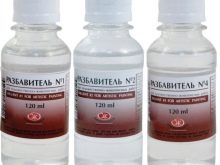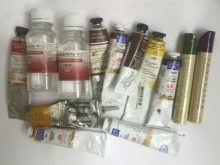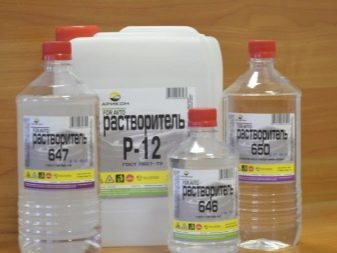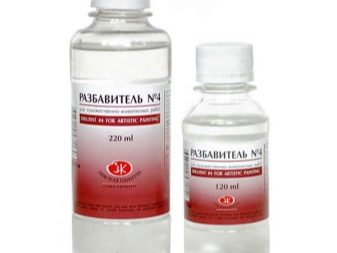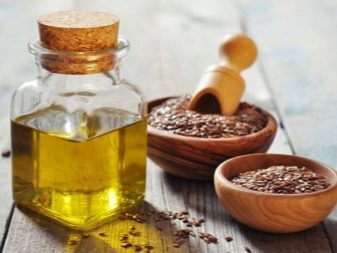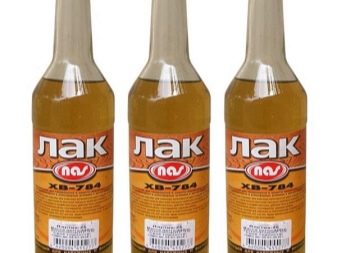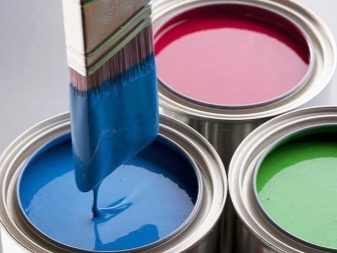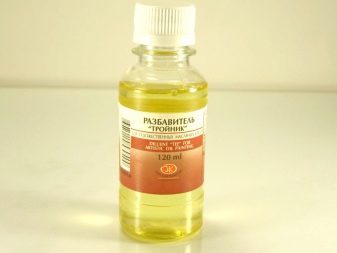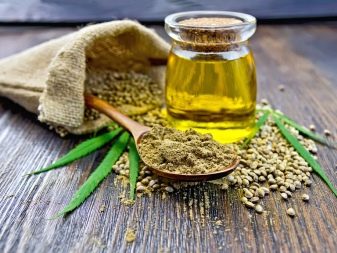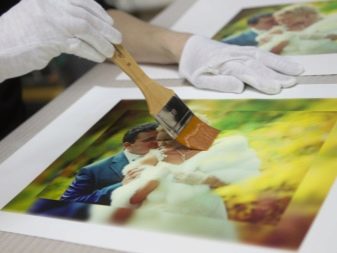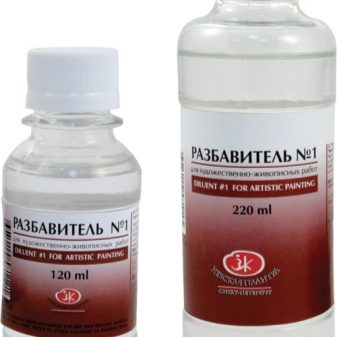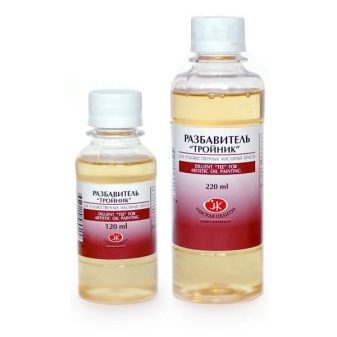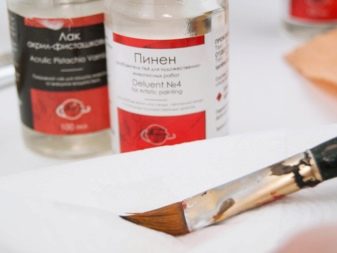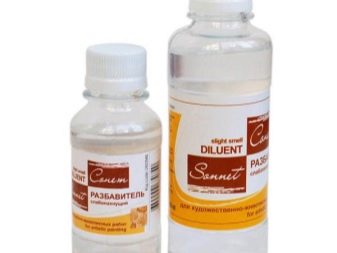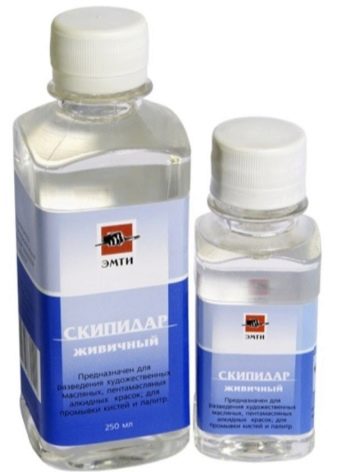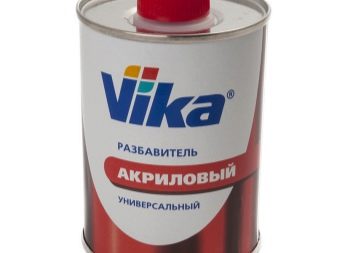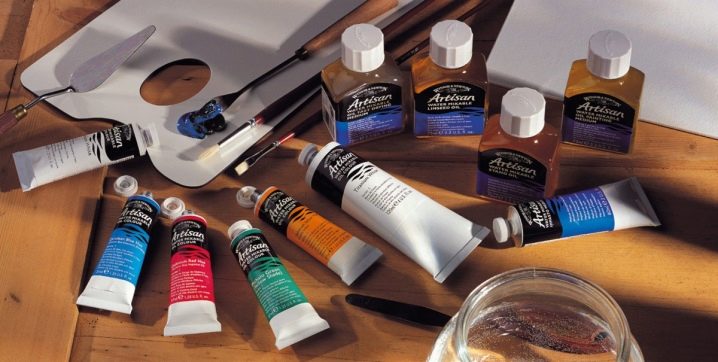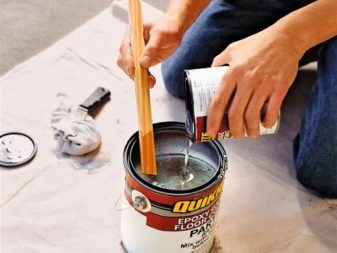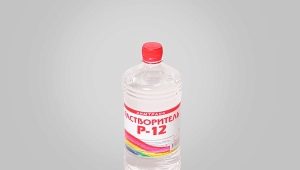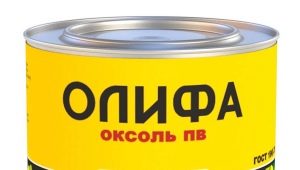How to choose a thinner for paints?
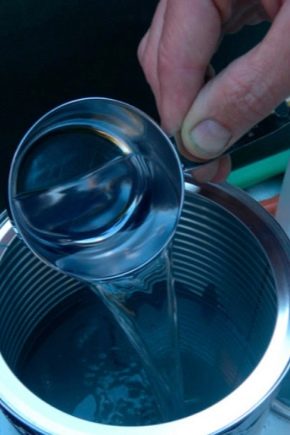
Anyone who is interested in pictorial art, sooner or later thought about how to begin to paint in oils. But unlike gouaches, watercolors, or acrylic, they, in addition to water, need a different solvent or thinner. They are used to dilute the paints themselves, because the oil itself is very thick, which is not particularly convenient in the process of creation.
Some resourceful artists also manage to use solvents as a means to wash brushes and palettes after work. However, it is easy to wash both brushes and palettes with ordinary soap and water.
Types of art devices when working with oil
Before you run to the store, it is worth warning that the solvent and thinner are different things.They have the same goal, but they have different effects on quality after application.
Therefore, in order not to get an unpleasant surprise, it is now worth understanding their differences:
- Diluent. The mixture does not impair the condition of paints due to its simple composition. And also it is used as a coating. After complete drying, the work condition does not get worse, but dries extremely slowly. But the diluent dilutes not all substances, but only selectively.
- Solvent. It is intended primarily for paint thinning. Solvent modernizes the composition of the paint, causing it to dry more quickly, but the quality of the coating may deteriorate. It is also used to overlap the layer, while thinning is impossible. Unlike a thinner, it dissolves all substances at the same time, making the paint more pliable for creativity.
Now that you can understand the difference between these two terms, you can choose which one suits you best - a thinner or a solvent. Of course, they are both good and widespread, but in addition to these two types, linseed oil, vegetable oil, varnish, twin and tee are often used.In this situation, there is no clear definition of what can be used, and what is not, everything is entirely up to you.
- Various oils - The most ancient method of diluting art paints. The very first oil paintings were painted with linseed oil. However, they reduce the resistance of paints, and after applying the paint becomes thicker if it is stored in tubes.
- Varnish - it is a resin mixed with an already known solvent. Thanks to the lacquer, the paintings become brighter and more dense. Thanks to this mixture, subsequent solvents are made - a double and a tee.
- Double - a solution for which you need to mix art varnish with oil. It is necessary to mix in proportions: 1 part of a varnish, 3 portions of oil.
- For tee add solvent to the mixture.
How to choose a solvent?
If, when choosing the right product, you are plagued by any doubts, then it is worth examining the properties of each to understand exactly what will work. This method was used by many artists since the inception of pictorial art.It all depends on whether you want to see your picture more glossy, perhaps with less density of colors and other factors that are important in the process of conceiving an idea.
- When it comes to writing a job in the shortest possible time, it is best to use pure thinner for artistic paints. It is worth buying in specialized stores, and not in a pharmacy or anywhere else. Work on the canvas with this thinner dries quickly, and also maintains the glossy shell of the painting for many years, while maintaining its quality in the best possible way. Its only negative - an unpleasant smell. Nowadays, you can find odorless on the shelves, but the price will be slightly higher, and more comfort in future work.
- When using different oils, the picture will dry longer, about 5-7 days, until the complete drying of thick layers on canvas. The oil also retains a glossy surface, but makes the paint after application thick and dense, which not all painters like.
The most common are flaxseed and oil with hemp, and the most transparent - poppy.
- Double and tee - a kind of golden mean between the two sides.Artists with great experience behind him make it themselves. But for those who have never come across this, it is recommended to buy a ready-made solution. By preparing the mixture yourself, it is possible to calculate the drying time of the paints, which obviously will help to organize the time of all the work spent. The average drying time for working with these mixtures is three days after work.
- The initial application for varnish is to cover a finished picture in order to improve its quality and safety for a long time. Resourceful creators found in the varnish also the properties inherent in solvents, therefore, later the time it was used not only for its main purpose. Works with a varnish dry within four days, keeping their firmness and a saturation.
Most popular manufacturers and their products
The theory is always more understandable than practice. Having come to any shop with art accessories, you can easily get lost in everything that provides a huge stand. It is easier for experienced artists - they already know what to buy for which painting, but for beginners in this area it’s harder.
Consider the materials that are ubiquitous and of the highest quality:
- ZHK - solvent number 1. When added to the oil paint reduces its saturation and increases the drying time. Serves as a good tool for the withdrawal of frozen substances from the palette and brushes. Perhaps the most common among contemporary artists who write on canvas.
- ZHK - tee. It contains a mixture of varnish, linseed oil and turpentine. Adds a glossy look to the picture, makes it more saturated and preserves its integrity for many years. The minus of the tee is that it is inherent in the oil to remove the paint over time, so some masters intentionally buy a double to avoid this trouble or prepare the tee themselves at home.
- "Sonnet" – odorless diluent. The company "Sonnet" is famous for its good products, as well as widespread in our country. The solution is a purified white spirit, with which the paint becomes more transparent, which makes it possible to make more accurate transitions and gradients. This property is especially important for those who love to paint landscapes.
Well welcomed by all artists, because "Sonnet" always produces high-quality products that are available to any beginner as well as professional painter.
- ZHK - thinner for art oil paints. It copes well with cleaning palettes and brushes, although for this purpose it is better to use less expensive mixtures. Fixes the layers and also speeds up the drying process. It retains its luster, but it does not have a particularly pleasant smell, as a result of which the work process may not be so pleasant.
- ZHK - thinner number 4 pinene. Unlike turpentine, after which the paintings become yellowed, it does not have such an unpleasant property. It is well compatible with paints and varnishes. When there is an excess of pinene in the work, the picture loses its natural luster. It has a persistent smell of coniferous trees, as it is made from natural products.
- EMTI - oil thinner. It should be used for quick-drying paints, because it increases the drying process up to several days.
- EMTI - turpentine gum. Completely natural product. It is not recommended to be stored in the sun, because when it hits the sun's rays it turns yellow and turns into resin. It has a pleasant smell of pine trees, which confirms the fact that it is made exclusively from natural resources.
Now isotonic diluent for metallic, 646, solvent, diluent generator GS-2000 and P12 are also popular.
These are only the most common varieties and can be replaced.Going into any shop of creativity, you are obliged to provide just a huge list of various companies, sizes, as well as various goods at a cost. You can choose the one that is right for you.
Among the manufacturers, Vika, Sikkens, Teknosolv can also be distinguished.
After reviewing the types and ways of diluting artistic oil paints, you can make your choice by deciding which one is best for you. Do not immediately go to the most elite store of art supplies and buy the most expensive solvent that you can find. He may not be suitable. Before buying any product, it is important to examine all the pros and cons, it’s sensible to think whether this is really necessary.
Possession of the letter in oil paints is one of the most difficult in the world. The most famous artists, including Leonardo da Vinci, Claude Monet, Picasso, wrote exclusively in oil, and owned this skill perfectly, conveying everything to the smallest detail.
Some creators use solvent only in the first layers, and then write “raw”, usually, this applies only to painting. Someone thinks that the method of dilution is not at all mandatory.In addition to the dense composition, the oil itself has a very specific smell. Thanks to easy application to the surface, these paints are suitable for any kind of activity: for painting pipes or to paint a painting on canvas.
Perhaps you have friends who love to draw. It is worth asking them about what is best to choose. They will tell their point of view on the methods of dissolution or help you choose something right for beginners in the field of oil painting.
Any creativity is always good. Do not hesitate to express their ideas, because only from them there are true works of art that will last for many years.
How to choose a thinner for oil paints, see the following video.

